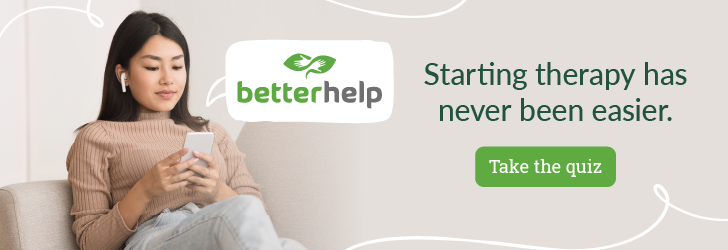Full Disclosure: Clicking on these links could mean a tiny commission for me, at no extra cost to you.
Anxiety is something we all deal with from time to time. Whether it’s being anxious about hitting an upcoming deadline, getting nervous before a school presentation, or feeling jittery before a doctor’s visit, it’s totally normal. Yes, anxiety is normal. However, when that anxiety starts taking over and messing with your daily routine and life, that’s when it becomes a bit of a problem. Ignoring it might keep you from getting the help you need or figuring out ways to deal with it. So, let’s not sweep it under the rug. If you’re noticing signs of anxiety and it is giving you a hard time, it’s okay to seek support and find ways to handle it – you’re not alone in this!

What is Anxiety?
Anxiety is a natural response that our bodies and minds experience in situations that feel or seem threatening or stressful. It’s a normal part of the human experience and can serve as a helpful mechanism to alert us to potential dangers. However, when anxiety becomes excessive, persistent, and starts interfering with daily life, it may develop into an anxiety disorder.
Types of Anxiety Disorders
Anxiety disorders are a group of mental health conditions characterized by excessive and persistent worry, fear, or anxiety that can interfere with daily life. These disorders go beyond the normal feelings of nervousness or stress that people may experience in certain situations. Anxiety disorders are generally chronic and can range from mild to severe, affecting a person’s thoughts, emotions, and behaviors.
Here are some common types of anxiety disorders:
- Generalized Anxiety Disorder (GAD): Generalized anxiety disorder involves excessive worry and anxiety about various aspects of life, such as work, health, and relationships. The worry is often disproportionate to the actual circumstances.
- Social Anxiety Disorder (SAD): Social anxiety is characterized by an intense fear of social situations and a persistent worry about being judged or embarrassed in social settings.
- Panic Disorder: Panic disorder involves recurrent and unexpected panic attacks, which are sudden episodes of intense fear accompanied by physical symptoms such as a racing heart, sweating, and shortness of breath.
- Obsessive-Compulsive Disorder (OCD): OCD involves recurring, intrusive thoughts (obsessions) and repetitive behaviors or mental acts (compulsions) aimed at reducing anxiety. These behaviors can become time-consuming and may interfere with daily functioning.
- Post-Traumatic Stress Disorder (PTSD): PTSD can develop after experiencing or witnessing a traumatic event. Symptoms may include flashbacks, nightmares, and severe anxiety related to the traumatic experience.
- Separation Anxiety Disorder: Separation anxiety is often diagnosed in children but can also affect adults. It involves excessive anxiety about separation from caregivers or loved ones.
There are also specific phobias, which include intense and irrational fears of specific objects or situations, such as heights, flying, animals, or needles, as well as other types of anxiety disorders not mentioned here.
Symptoms of Anxiety
Anxiety can manifest in various ways, both physically and mentally. Common physical symptoms include increased heart rate, muscle tension, sweating, trembling, and restlessness. Mentally, anxiety often involves excessive worry, fear, and intrusive thoughts about potential future events. People with anxiety disorders may find it challenging to control these worries, leading to significant distress.
It’s important to note that there are different types of anxiety disorders, including generalized anxiety disorder (GAD), social anxiety disorder, panic disorder, and specific phobias, among others. Each type of anxiety has its own set of symptoms and characteristics.
10 Early Signs of Anxiety
The early signs of anxiety can be subtle and may vary from person to person. It’s essential to pay attention to changes in thoughts, emotions, and behaviors that might indicate the presence of anxiety. Early signs of anxiety may include:
1. Excessive Worry
Excessive worry is a hallmark feature of anxiety, and it often involves persistent and intrusive thoughts about potential future events, situations, or scenarios. Individuals experiencing excessive worry may find that their concerns are disproportionate to the actual likelihood or severity of the events they are apprehensive about.
Excessive worry is often characterized by thoughts that occur frequently throughout the day and may be challenging to control. The intensity of the worry can range from mild to overwhelming, and it may be accompanied by a sense of dread or impending doom. Worries can span a wide range of topics, including personal health, work, relationships, finances, and various aspects of daily life. The content of the worry may change, but the underlying pattern of excessive concern persists.
2. “What If” Thinking
An early sign of anxiety is getting caught in the cycle of “what-if” thinking, contemplating potential negative outcomes and catastrophizing future events. This type of thinking can contribute to increased anxiety.
“What-if” thinking is a cognitive pattern often associated with anxiety, wherein individuals engage in a continuous and unproductive cycle of anticipating potential negative outcomes or catastrophizing future events. This type of thinking involves playing out various scenarios in the mind, each typically focused on what could go wrong. It’s a form of anticipatory anxiety that fuels worry and heightens emotional distress.
In “what-if” thinking, individuals may find themselves caught in a loop of hypothetical scenarios, dwelling on the worst-case possibilities. For example, someone preparing for an important presentation might repeatedly think, “What if I forget my lines? What if the audience doesn’t find it interesting? What if I embarrass myself?” These persistent and often irrational thoughts contribute to a heightened state of anxiety, generating unnecessary stress and tension.
This cognitive pattern can permeate various aspects of life, from personal relationships to work-related situations. The “what-if” scenarios are often fueled by fear and uncertainty, amplifying anxiety levels. The constant consideration of negative possibilities can hinder decision-making, disrupt problem-solving, and contribute to a pervasive sense of unease.
“What-if” thinking tends to focus on future events, leading individuals to ruminate on circumstances that may or may not come to pass. This preoccupation with potential negative outcomes can have a profound impact on mental well-being, affecting mood, concentration, and overall quality of life.
Recognizing and challenging “what-if” thinking is a crucial step in managing anxiety. Cognitive-behavioral therapy (CBT) techniques, such as identifying and reframing irrational thoughts, can be effective in breaking this cycle. Learning to shift focus from catastrophic scenarios to more realistic and positive perspectives is key to reducing anxiety associated with “what-if” thinking.
3. Restlessness
Restlessness is a common sign of anxiety that involves a pervasive sense of agitation and an inability to settle or relax. When individuals experience restlessness due to anxiety, they often find it challenging to remain still or maintain a calm demeanor. It’s characterized by a constant need to move, fidget, or engage in repetitive behaviors as a way of attempting to alleviate the inner tension.
This restlessness can be both physical and mental. Physically, people may exhibit behaviors such as pacing, tapping their feet, or constantly shifting their weight from one foot to the other. There’s a palpable energy that accompanies this restlessness, as if the body is on high alert and ready to respond to a perceived threat.
Mentally, restlessness can manifest as an internal sense of unease or an overwhelming desire to escape from the current situation. It may feel like the mind is in constant motion, with thoughts racing and a difficulty achieving a state of mental calmness.
The impact of restlessness extends beyond the immediate physical and mental sensations. It can interfere with concentration, disrupt the ability to engage in activities that require sustained focus, and contribute to a general sense of discomfort. The restlessness associated with anxiety is often a response to heightened arousal in the body’s stress response system, leading to a persistent feeling of being on edge.
4. Difficulties Sleeping
Difficulties sleeping, often associated with anxiety, can manifest in various ways, impacting both the ability to fall asleep and the overall quality of rest. These sleep disturbances are indicative of the close interplay between mental and physical well-being.
Individuals dealing with anxiety-related sleep difficulties may find it challenging to initiate sleep, experiencing prolonged periods of lying awake before finally drifting off. Racing thoughts, worries, or an overactive mind can contribute to this delay in the onset of sleep. Once asleep, the sleep may be fragmented, with individuals frequently waking during the night or experiencing restless, light sleep.
Anxiety-induced sleep disturbances can also lead to early morning awakenings, where individuals find themselves waking up much earlier than intended and struggle to return to sleep. This disruption in sleep architecture can result in a diminished overall sleep duration, contributing to feelings of fatigue and irritability during waking hours.
The physical manifestations of anxiety, such as muscle tension and increased heart rate, can further exacerbate sleep difficulties.
The consequences of disrupted sleep extend beyond mere tiredness; they often impact daily functioning, mood regulation, and cognitive performance. Chronic sleep difficulties can contribute to a cycle of heightened anxiety, as the fatigue and mental fog associated with inadequate sleep amplify stress responses.
Addressing difficulties in sleeping due to anxiety involves not only managing the immediate symptoms but also addressing the underlying causes of anxiety. Adopting healthy sleep hygiene practices, creating a calming bedtime routine, and cultivating a sleep-conducive environment are crucial steps.
5. Avoidance
Avoidance behavior is a common response to anxiety. It’s when people feel inclined to stay away from situations, places, or activities that evoke feelings of discomfort or fear. It serves as a short-term strategy to alleviate immediate distress but often results in a cycle of heightened anxiety and a constricted range of life experiences.
The are various forms of avoidance behaviour, such as:
- Steering clear of specific situations or places
- Neglecting tasks perceived as anxiety-inducing
- Suppressing or ignoring emotions
- Avoiding certain thoughts
- Limiting social interactions
- Abstaining from activities that provoke anxiety-related physical sensations.
Despite providing momentary relief, avoidance tends to reinforce negative patterns and hinder personal growth. Over time, it narrows the comfort zone, restricting opportunities for resilience and growth. Breaking this cycle involves gradually confronting feared situations, often with the assistance of therapeutic interventions like exposure therapy. This approach helps build resilience, increase tolerance to discomfort, and diminish the influence of anxiety.
6. Digestive Issues
Digestive issues are one of the more common physical signs of anxiety. The physiological and psychological connection between the mind and the gut is a well-established aspect of the mind-body relationship.. The gut is home to a complex network of nerves and neurotransmitters, often referred to as the “second brain” or the enteric nervous system. Anxiety can disrupt the balance of this system, leading to a variety of digestive issues.
One common manifestation is stomach aches, which may range from mild discomfort to more pronounced pain. The tension and stress associated with anxiety can contribute to the tightening of muscles in the abdominal region, leading to sensations of discomfort and unease.
Nausea is another digestive symptom frequently linked to anxiety. The body’s stress response can trigger changes in digestion, potentially slowing down or disrupting the normal digestive process. This disruption may result in feelings of queasiness and a reluctance to eat.
Anxiety-induced digestive issues can also include changes in bowel habits. Some individuals may experience diarrhea due to the increased activity of the digestive system under stress. On the other hand, others might encounter constipation as a result of slowed digestion caused by anxiety.
Recognizing the link between anxiety and digestive issues is crucial for comprehensive health management. It underscores the importance of addressing not only the physical symptoms but also the underlying anxiety. Adopting stress-reducing techniques, practicing mindfulness, and seeking support from mental health professionals can be integral in alleviating anxiety-related digestive problems and fostering overall wellbeing.
7. Difficulties Concentrating
Difficulties concentrating, often associated with anxiety, involve significant challenges in maintaining focused attention on tasks or thoughts. The intricate relationship between mental states and cognitive function becomes apparent when anxiety interferes with an individual’s ability to concentrate effectively.
When dealing with anxiety-related concentration difficulties, individuals may find their minds wandering, making it challenging to sustain attention on a specific task. This wandering can be attributed to the persistent and intrusive nature of anxious thoughts, which divert cognitive resources away from the present moment.
The cognitive impact of anxiety extends beyond mere distraction. Individuals may experience a heightened sensitivity to environmental stimuli, such as sounds or visual cues, further complicating concentration. This heightened sensitivity can make it difficult to filter out irrelevant information, leading to a sense of cognitive overload.
The emotional component of anxiety also plays a role in difficulties concentrating. Anxiety can evoke strong emotions, ranging from apprehension to fear, which may consume mental bandwidth and hinder the cognitive processes necessary for sustained focus.
Problems with concentration may be exacerbated by the physical symptoms of anxiety, such as muscle tension or restlessness. These physical manifestations can contribute to a sense of discomfort that further impedes cognitive clarity.
Concentration difficulties can also impact performance. This only amplifies anxiety, creating a constant loop that exacerbates concentration and anxiety issues.
Addressing signs of anxiety related to concentration involves a multifaceted approach. Implementing stress-reduction techniques, incorporating mindfulness practices, and developing strategies to manage anxious thoughts can be instrumental.
8. Sensitivity to Stimuli
Sensitivity to stimuli is another common sign of anxiety. It involves an increased responsiveness to various environmental factors that might be perceived as overwhelming or distressing. This heightened sensitivity can affect multiple senses, including auditory, visual, and tactile, creating an intensified perception of the surrounding world.
- Auditory sensitivity: you may feel overwhelmed by noises that others might find tolerable. Everyday sounds, such as traffic, conversations, or even background music, can become sources of discomfort or agitation. This heightened auditory awareness is closely tied to the general state of heightened arousal that often accompanies anxiety.
- Visual sensitivity: an increased responsiveness to bright lights, busy environments, or visually complex stimuli. For someone with anxiety, a crowded and visually stimulating space may be more challenging to navigate, potentially leading to feelings of unease or a desire to withdraw.
- Tactile sensitivity: an increased awareness and sometimes discomfort related to touch or physical sensations. Individuals experiencing anxiety may find certain textures, fabrics, or even physical contact more distressing than usual. This heightened tactile sensitivity is interconnected with the body’s heightened stress response.
Sensitivity to stimuli can contribute to difficulties concentrating, as the overwhelming nature of environmental input may divert attention and make it challenging to filter out irrelevant information. This heightened sensitivity can also lead to an increased startle response, where individuals may react more strongly to sudden or unexpected stimuli.
It can also contribute to feelings of irritability, restlessness, or fatigue, as the nervous system becomes overstimulated by the environment. Over time, this heightened sensitivity can contribute to an overall sense of heightened anxiety, creating a cycle of distress and hyperresponsiveness.
Managing sensitivity to stimuli associated with anxiety involves creating environments that are conducive to a sense of calm and well-being. This may include strategies such as creating quiet spaces, using ear protection in noisy environments, or adjusting lighting to reduce visual stimulation. Mindfulness practices and relaxation techniques can also be valuable in regulating the body’s response to stimuli, fostering a more balanced and grounded experience of the surrounding world.
9. Self-Doubt
Self-doubt is when you feel a lack of confidence in your abilities, decisions, or overall worth. It is an internal dialogue characterized by persistent questioning and skepticism about your capabilities and the validity of their actions. This pervasive sense of uncertainty can permeate various aspects of life, impacting personal relationships, professional pursuits, and overall well-being.
At its core, self-doubt reflects a dissonance between an individual’s perceived abilities and the expectations placed upon them. This internal conflict can manifest as a continuous stream of negative self-talk, where individuals undermine their achievements, second-guess their choices, and fear that they are not measuring up to external standards.
The origins of self-doubt can be multifaceted. However, they’re often rooted in past experiences, societal expectations, or internalized beliefs about your own competence. People grappling with self-doubt may find themselves trapped in a cycle where each perceived failure or setback reinforces a negative self-image, perpetuating the doubt.
In interpersonal relationships, self-doubt may lead individuals to question the authenticity of others’ positive regard or create barriers to forming meaningful connections. This apprehension about one’s worthiness of love and acceptance can hinder the development of healthy relationships, both personally and professionally.
Self-doubt can be paralyzing, preventing individuals from pursuing opportunities, asserting themselves in various situations, or taking risks that could lead to personal growth. The fear of failure or judgment becomes a formidable barrier to achieving goals and fulfilling potential.
10. Physical Symptoms
Physical symptoms associated with anxiety can manifest in various parts of the body, often as a response to the physiological changes triggered by the body’s stress response system.
Muscle tension is a common physical manifestation of anxiety, often felt in areas such as the neck, shoulders, and jaw. This tension can lead to discomfort, aches, or even headaches. The body’s instinctive response to stress involves preparing for a ‘fight or flight’ scenario, causing muscles to contract as a protective mechanism.
Restlessness and trembling can also be physical signs of anxiety, as well as fatigue, shallow or rapid breathing, increased heart rate, palpitations, stomach aches, headaches and digestive issues as mentioned previously.
Recognizing and addressing these physical symptoms is crucial for comprehensive mental health management. Lifestyle modifications, stress-reducing techniques, regular exercise, and relaxation practices can help alleviate physical symptoms associated with anxiety.
It’s crucial to note that experiencing one or more of these signs of anxiety doesn’t necessarily mean you have an anxiety disorder. However, if these signs persist, intensify, or significantly interfere with daily life, seeking support from a mental health professional is recommended. Early intervention can be crucial in managing anxiety effectively.
Self-Help Strategies for Addressing The Early Signs of Anxiety
Here are some effective ways to address the early signs of anxiety:
- Self Awareness: Pay attention to your thoughts, feelings, and physical sensations. Recognizing the early signs of anxiety allows you to intervene before it escalates.
- Deep Breathing: Practice deep, diaphragmatic breathing to calm the nervous system.
- Progressive Muscle Relaxation (PMR): Systematically tense and then relax different muscle groups to release tension.
- Mindful Meditation: Engage in mindfulness meditation to bring attention to the present moment and reduce racing thoughts.
Exclusive Offer: Downad The #1 Mindfulness App
Healthy Lifestyle Habits
- Regular Exercise: Physical activity can help reduce anxiety by promoting the release of endorphins, the body’s natural mood enhancers.
- Balanced Diet: Eat nutritious meals with a focus on whole foods, and avoid excessive caffeine and sugar.
- Limit Stimulants: Reduce or eliminate the intake of stimulants like caffeine and nicotine, especially before bed.
- Adequate Sleep: Establish a consistent sleep routine and create a sleep-conducive environment to support restful sleep.
- Social Support: Connect with friends, family, or support groups to share your feelings and experiences. Social connections can provide emotional support.
- Journaling: Write down your thoughts and feelings in a journal to gain insights into patterns and triggers.
Buy Now: The Ultimate Anxiety Relief Journal
Professional Support
- Consult with a mental health professional, such as a therapist or counselor, for guidance and coping strategies.
- Consider cognitive-behavioral therapy (CBT), which is effective in addressing anxiety by changing thought patterns and behaviors.
- Explore the different types of therapy for anxiety.
Do I need Professional Help for Anxiety
In some cases, medication prescribed by a psychiatrist may be considered, particularly for persistent or severe anxiety symptoms.
Anxiety disorders are treatable. There are various therapeutic approaches, including cognitive-behavioral therapy (CBT), medication, and relaxation techniques, that are commonly used to help people manage symptoms and improve their quality of life. Recognizing the early signs of anxiety is the first step to healing.
Consider these questions as a self-assessment to gauge whether seeking help for your anxiety might be beneficial:
- Are certain activities, people, or places avoided due to associations with past panic attacks?
- Has anxiety caused conflicts in your relationships with loved ones?
- Have you missed crucial family, work, or school responsibilities because of anxiety?
- Have attempts to control or manage anxiety been unsuccessful?
If you answered yes to any of these questions, professional assistance is available. Seeking help is a courageous step and there are many therapists online offering immediate support in times of need. Additionally, there are several self help strategies that you can use to start addressing the early signs of anxiety.











